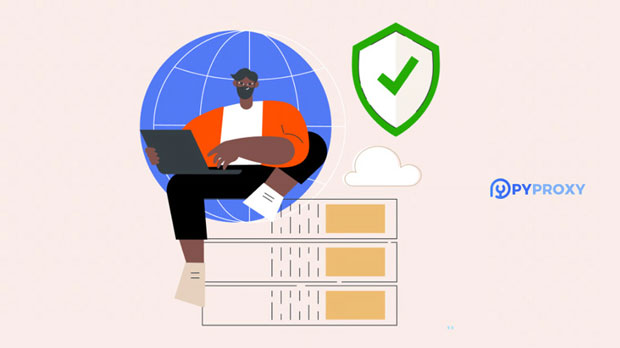In today's digital age, proxies are commonly used for online anonymity and privacy, allowing users to mask their real IP addresses. Among the various types of proxies, SOCKS5 and HTTP proxies are the most widely used. However, many free proxy websites make it challenging to distinguish between them. Understanding how to differentiate these two types of proxies is crucial for ensuring security, efficiency, and reliability when browsing the internet. This article will delve into the distinguishing features of SOCKS5 and HTTP proxies, and provide practical tips to help users identify them on free proxy websites. 1. Understanding SOCKS5 and HTTP ProxiesBefore we dive into identifying the differences between SOCKS5 and HTTP proxies on free websites, it is essential to understand their fundamental characteristics.1.1 socks5 proxySOCKS5 is the latest version of the SOCKS (Socket Secure) protocol. It operates at a lower level in the internet communication stack, meaning it can support any kind of internet traffic, including HTTP, FTP, and even peer-to-peer (P2P) connections. sock s5 proxies are known for their versatility and ability to handle various types of protocols. They offer better security than HTTP proxies, as they support authentication methods, provide data encryption, and allow for more flexible tunneling. 1.2 HTTP ProxyOn the other hand, HTTP proxies are primarily designed for web traffic, specifically HTTP and HTTPS requests. These proxies are typically simpler and more limited in their functionality. They can only process web-based traffic and do not offer the same level of security or versatility as SOCKS5 proxies. HTTP proxies can provide basic privacy protection by masking the user's IP address but lack the ability to handle other protocols.2. Key Differences Between SOCKS5 and HTTP ProxiesWhen browsing free proxy websites, you may come across SOCKS5 and HTTP proxies. The key differences between these two types of proxies can help you easily identify them:2.1 Protocol SupportSOCKS5 proxies support a wide range of protocols, including HTTP, FTP, SMTP, and P2P, allowing them to be used for various purposes such as torrenting, gaming, and secure browsing. HTTP proxies, in contrast, are restricted to handling HTTP and HTTPS traffic, making them more suitable for simple web browsing tasks.2.2 Security and PrivacySOCKS5 proxies offer better privacy and security features compared to HTTP proxies. They support user authentication, which adds an extra layer of protection. Additionally, SOCKS5 proxies can encrypt data during transmission, ensuring that sensitive information remains private. HTTP proxies, however, do not support such features, and their encryption capabilities are limited or non-existent.2.3 Speed and PerformanceIn general, SOCKS5 proxies tend to offer faster speeds and better performance compared to HTTP proxies. This is due to their ability to handle a broader range of traffic types and use fewer system resources for web browsing tasks. HTTP proxies, being more simplistic, may experience slowdowns when dealing with heavy traffic or complex data requests.3. Identifying SOCKS5 and HTTP Proxies on Free Proxy WebsitesNow that you have a basic understanding of the differences between SOCKS5 and HTTP proxies, it’s time to explore how you can identify them on free proxy websites.3.1 Look for Specific Proxy DetailsFree proxy websites often list proxies along with some key details such as the IP address, port number, and protocol type. Look for the protocol type to distinguish between SOCKS5 and HTTP proxies. SOCKS5 proxies are often listed as “SOCKS5” or “SOCKS” in the protocol field, while HTTP proxies are usually labeled as “HTTP” or “HTTPS.”3.2 Check the Port NumbersAnother helpful clue is the port number. SOCKS5 proxies typically use ports like 1080 or 443, while HTTP proxies usually use port 80 or 8080. However, this isn’t a foolproof method, as some proxies may be configured to use custom ports. Therefore, it is essential to cross-check the proxy’s protocol type with its port number.3.3 Test the ProxyIf the website does not explicitly mention the proxy type, you can test it yourself. For example, you can configure your browser or application to use the proxy and try accessing various services like FTP or torrenting websites. If the proxy allows you to access a wider range of services beyond web browsing, it is likely a SOCKS5 proxy. If it restricts you to browsing-only tasks, then it’s probably an HTTP proxy.3.4 Proxy Performance IndicatorsSometimes, the performance of the proxy can give you clues about its type. SOCKS5 proxies generally offer better performance, especially when it comes to handling large files or engaging in activities such as online gaming or streaming. HTTP proxies, in contrast, may perform well for basic browsing tasks but can struggle under heavier loads.4. Why It’s Important to Identify the Right Proxy TypeChoosing the right proxy type can significantly impact your online experience, whether you are looking for better security, faster speeds, or access to more services. Here are some key reasons why identifying the correct proxy type is important:4.1 Security ConsiderationsIf you are concerned about online privacy, using a SOCKS5 proxy is a more secure choice, as it offers better encryption and privacy features. HTTP proxies may leave your data vulnerable, especially when accessing sensitive websites or performing transactions.4.2 Performance and SpeedFor activities that require high-speed internet, such as streaming or torrenting, SOCKS5 proxies provide superior performance. HTTP proxies, while sufficient for simple browsing, can cause slowdowns or interruptions in performance during heavy tasks.4.3 Compatibility and VersatilitySOCKS5 proxies are highly versatile and can handle various types of internet traffic. They are suitable for users who require more flexibility in their online activities, while HTTP proxies are best suited for straightforward web browsing tasks.Identifying the difference between SOCKS5 and HTTP proxies on free proxy websites is essential for ensuring that your online activities are secure, efficient, and meet your specific needs. By understanding the characteristics of both proxy types and using the tips outlined in this article, you can make more informed decisions when choosing a proxy for your browsing or online security needs. Remember, while SOCKS5 proxies offer better security, speed, and versatility, HTTP proxies are a simpler and more straightforward solution for web browsing tasks. Always evaluate the proxy’s protocol, port number, and performance to determine the best fit for your requirements.
Sep 08, 2025


































































